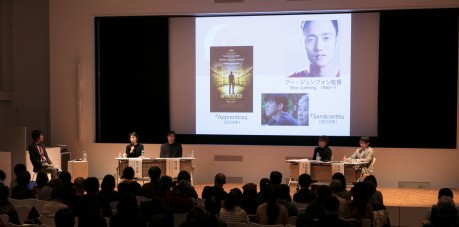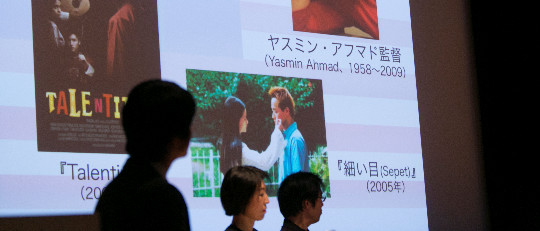Special Screening+Talk Show
Identity Issues in Singapore and Malaysia Seen through Films Abstract of Screening


The pre-event of the SUNSHOWER: Contemporary Art from Southeast Asia 1980s to Now , “Identity Issues in Singapore and Malaysia Seen through Films” was held during the 10th Anniversary Week of the National Art Center, Tokyo, to introduce the exhibition itself and also the cultures and history of Southeast Asia to a broader audience. The reason for focusing on “Diverse Identities” among the nine chapters is that many of the artists the curatorial team met during its research frequently and ardently produced works surrounding the issues of identity. In addition, we ended up selecting many Singaporean and Malaysian artists for this particular chapter, thus the pre-event itself paid attention to the circumstances of these two countries. Furthermore, in light of the fact that most of these participating artists work on videos and several of them are film directors, we chose to screen commercial films and not limit our scope to art films. By introducing films that are popular but also reflect various aspects of society during the 10th Anniversary Week of the National Art Center, Tokyo, which reels in many visitors, we wanted to expand the audience-base for Southeast Asian contemporary art and attract a more diverse range of visitors.
The films screened were SEPET (2005), an early work by Malaysian director Yasmin Ahmad, and Sandcastle (2010), the first feature film by Singaporean director Boo Junfeng who is also one of the participating artists for the “SUNSHOWER” exhibition. In between the two screenings, a curator from each of the venues, the National Art Center, Tokyo, and the Mori Art Museum, held a talk show with film presenter Yumi Matsushita and performing arts researcher Ken Takiguchi.
In Boo’s Sandcastle, set in 1990s Singapore, the eighteen-year old protagonist enters military service, learns the past of his late father who had been involved in anti-governmental protests, and confronts the nation’s unknown history and also familial conflicts. As the title states, this film portrays the stifles of living in a sandcastle-like place, and also lures the audience with its carefully woven narrative and entertaining aspect; a quality of realism that will present-day Japanese audiences to related to it. Boo’s style of extracting the history and stories forgotten by countries and individuals and turning them around onto the viewers as a form of questioning is not limited to his films but appears in his artworks as well. Happy and Free (2013), which we are currently negotiating to show at the “SUNSHOWER” exhibition, is a karaoke-room installation in which “Happy and Free,” the song celebrating the Malaysian Federation’s independence of 1963, plays. Under the hypothetical setting of “if Singapore had not gained independence,” the installation provides a unique twist in the fictional celebration of the 50th Anniversary of the Federation.
SEPET by director Yasmin is a love story between a Malay girl named Orked and a Chinese boy named Jason who makes a meager living by selling VCD of Hong Kong movies on the street. Yasmin had produced many stories that smoothly cross over the religious, ethnic, and linguistic boundaries that exist in Malaysia, but she passed away in 2009 at the age of fifty-one. While SEPET, an early work of hers, is a youth film, it also envelops the social issues inherent in Malaysia, and realistically portrays the deep divisions between Malays and Chinese, and how multiple languages pour through between families and friends. By depicting a fictional society that is without discrimination, I think that Yasmin, who showed Malaysian society with its mixture of diverse people, was searching for a way to bring the non-fictional, real society closer to it. How we can accept conflicts and differences is a pressing issue that is not limited to Malaysia. Thus, we chose SEPET for the screening.
During the talk show, Ms. Matsushita, who was the key figure in introducing both films to Japan and grew up in Southeast Asia, spoke about the social conditions and actual circumstances of film production in the region. Mr. Takiguchi, a performing arts researcher who has lived in Malaysia and Singapore for a total of seventeen years combined, showed precious videos of performing arts in the region, and shared his wide range of insight into identity.
Questionnaires collected showed many of the audience were satisfied, expressing opinions such as, “explanations on Southeast Asia’s social structures and historical background were easily understandable and I was able to gain a deep knowledge [on the subject].” Also, we read that many people were “now interested in the contemporary artists introduced in the talk,” and that they are, “looking forward to seeing the “SUNSHOWER” exhibition.” Such reactions convinced us of the effect of advertising for visitors who came for reasons other than interests in the arts.
Photo: Seiya Kawamoto
